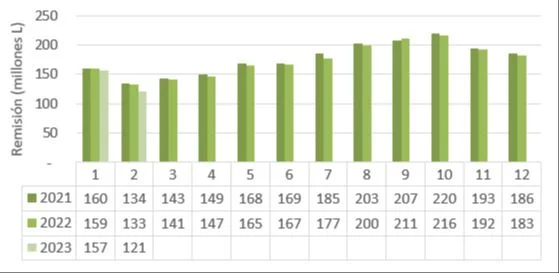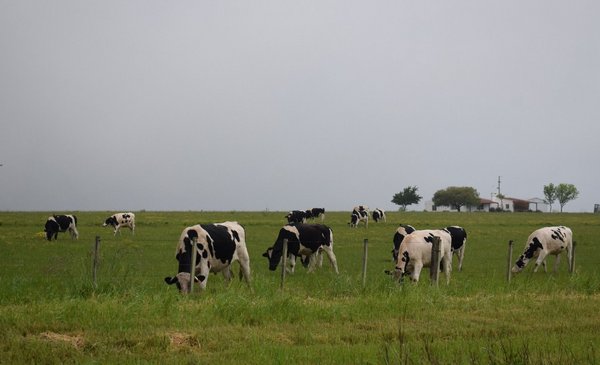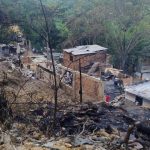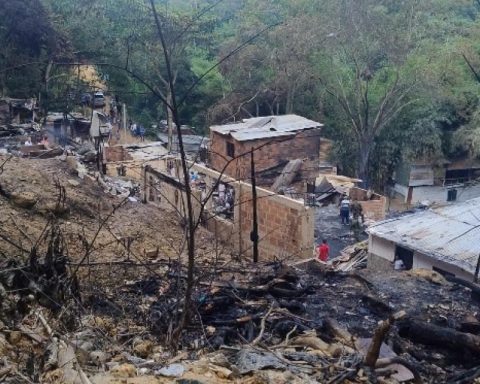At the beginning of March Justino Zavala, director of the Association of Tamberos de Canelones (ATC), published an editorial in TodoTambo magazine in which, among other considerations and Referring to the impacts of the drought, he alluded to the fact that “day zero” had not yet arrived.. The almost total absence of rain for many weeks harmed almost all sectors of Uruguayan agriculture and motivated the government to extend the agricultural emergency until April 30.
The drought at the beginning of the current month was expressing itself in all its magnitude and then, after detailing the set of specific damages in the milk production sector, Zavala in his analysis pointed out: “The worst thing is that we have not yet reached day zero ”, alluding to the fact that there was no end in sight to the climatic adversity.
Today, around the end of MarchZavala told The Observer that That “zero day” arrived, because it rained well in almost all the areas with dairy farms..
He specified that “although there are areas of Colonia and San José that did not receive water and are still in a critical situation, in the central nucleus of the dairy basin it rained well, day zero arrived and the truth is that it shows.”
So much, he pointed out, that “Although it seems incredible” there are producers who have been able to carry out even two grazings, at least one, because “the sorghums that were very bad regrowth in an impressive way and the alfalfas also came”.
Therefore, he envisioned, there will be a rebound in milk production and referral to industrial complexes that will be noticed as early as Marchbut above all from now on as long as the rain regime is definitively normalized.
At least, he commented, “the drop in remission will decrease.”
less milk
This week the National Milk Institute (see in the graphs) reported that in February 2023 milk delivery from dairy farms fell 9.3% compared to the same month in 2022, as a result of the drought. At the same time, in the accumulated 12 months, 2,075 million liters were shipped, that is, 1.9% less than the same previous period. The drop in the initial two-month period of 2023 compared to that period of 2022 stood at 4.9%.
Source: Inal.

Source: Inal.
A brutal new debt
Zavala, after considering this change in the reality of the food supply in the dairy farms and, therefore, in the production volume, referred to a generated problem, which does not disappear even if it rains.
“A brutal debt was formed, the estimate varies depending on who manages it, but surely it is above US $ 60 million”advertisement.
It is, he pointed out, “an amount generated by extraordinary financing, it is not an over-indebtedness, luckily the sector had a low level of debt until this drought problem.”
The need to access capital for key inputs during the drought, when the fields stopped offering food, “generated that ball, that unexpected debt, which We are going to have to find a formula to finance it so that it does not become a sieve that makes producers without backs unable to bear it”.
In winter with little clothing
About how the game is going, Zavala, whose production system is in Canelones, near Los Cerrillos, said: “We are going into winter with little clothes, hoping that winter will be reasonably goodUnfortunately, the forecasts do not help, because there is talk of excess water and that is as bad or in some cases worse than a drought.
Closing of tambos?
Regarding the price of milk to the producer, he pointed out that “it has remained in dollars, largely due to the exchange rate, it has even improved a bit, it is around US$ 0.43 per liter”.
However, in pesos there was a drop “and that hits the small producer much more, because their family expenses depend a lot on the milk they get and with inflation of 9% a drop in the price of milk in pesos of 2% makes their maintenance”he explained.
What Zavala fears, and calls for action to be taken to avoid it, is that “many small tamberos start thinking about migrating to other productions or even to other types of jobs.”


















